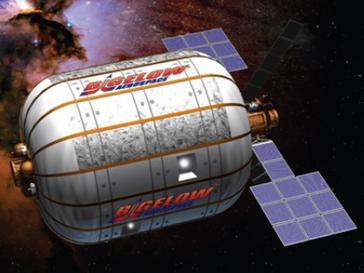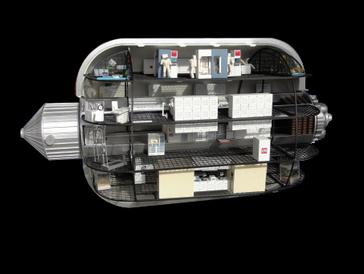A balloon containing a cubic meter of breathable air would be capable of hoisting about half a kilogram
So, if we take the late Bigelow BA330 for a start

en.wikipedia.org
330 cubic meters divided by two: it could thus lift 165 kg of payload across Venus atmosphere ?
And then was the BA2100 project, so 2100 cubic meters; half of that is 1050 kg,
soooo - it could float across Venus atmosphere with a bit more than 1 mt of payload ?
My mind is blown (appropriate word, really LMAO).
In passing, it may be possible to mix helium & air modules, all of them BA2100s.

en.wikipedia.org
For example: three BA2100, two of them filled with helium and one with air, could lift 2250 + 2250 + 1125 = 5625 kg across Venus atmosphere.
Some record durations according to weight
- Gemini: 14 days, 3800 kg, two men
- Apollo: 11 days, 30 000 kg, three men
- Soyuz: 18 days, 7000 kg, three men (they ended in very poor shape, however)
Or maybe we could hang a 19 800 kg Salyut there, and get a 237 days mission duration.
Endless possibilities...




